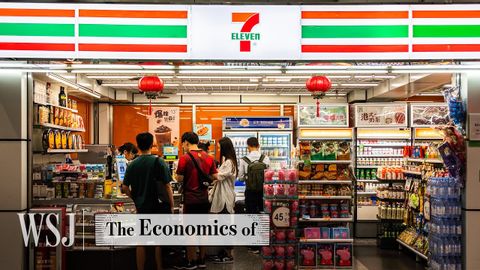美7-11渴望將其超商打造更「日本化」(7-Eleven Is Reinventing Its $17B Food Business to Be More Japanese | WSJ The Economics Of)
VoiceTube 發佈於 2024 年 07 月 07 日  沒有此條件下的單字
沒有此條件下的單字US /pɚˈsɛpʃən/
・
UK /pəˈsepʃn/
- n. (c./u.)知覺;感知;知覺;理解;看法;觀點;信念;洞察力
US /ˈstrʌɡəl/
・
UK /'strʌɡl/
- v.t./i.奮鬥;掙扎;打鬥;搏鬥
- n. (c./u.)掙扎;掙扎;奮鬥;難題
- adj.巨大的;大而重的;大量的;厚重的;大規模的
US /ˈmaɪndset/
・
UK /ˈmaɪndset/
